 W
WThe First Battle of Adobe Walls was a battle between the United States Army and American Indians. The Kiowa, Comanche and Plains Apache tribes drove from the battlefield a United States Expeditionary Force that was reacting to attacks on white settlers moving into the Southwest. The battle, on November 25, 1864, resulted in light casualties on both sides but was one of the largest engagements fought on the Great Plains.
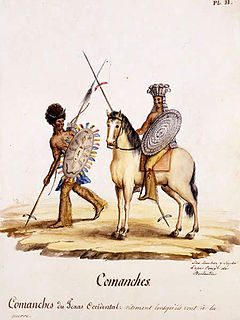 W
WThe Antelope Hills expedition was a campaign from January to May 1858 by the Texas Rangers and members of other allied Native American tribes against Comanche and Kiowa villages in the Comancheria. It began in West Texas and ended in a series of fights with the Comanche tribe on May 12, 1858, at a place called Antelope Hills by Little Robe Creek, a tributary of the Canadian River in what is now Oklahoma. The hills are also called the "South Canadians", as they surround the Canadian River. The fighting on May 12, 1858, is often called the Battle of Little Robe Creek.
 W
WThe Apache Campaign of 1896 was the final United States Army operation against Apaches who were raiding and not living in a reservation. It began in April after some Apaches killed three American settlers in Arizona. The Apaches were pursued by the army, which caught up with them in the Four Corners region of Arizona, New Mexico, Sonora and Chihuahua. There were only two important encounters during the campaign and, because both of them occurred in the remote Four Corners region, it is unknown if they took place on American or Mexican soil.
 W
WThe Battle of Apache Pass was fought in 1862 at Apache Pass, Arizona, in the United States, between Apache warriors and the Union volunteers of the California Column as it marched from California to capture Confederate Arizona and to reinforce New Mexico's Union army. It was one of the largest battles between the Americans and the Chiricahua during the Apache Wars.
 W
WThe raid on Bear Valley was an armed conflict that occurred in 1886 during Geronimo's War. In late April, a band of Chiricahua Apaches attacked settlements in Santa Cruz County, Arizona over the course of two days. The Apaches raided four cattle ranches in or around Bear Valley, leaving four settlers dead, including a woman and her baby. They also captured a young girl, who was found dead several days after the event, and stole or destroyed a large amount of private property. When the United States Army learned of the attack, an expedition was launched to pursue the hostiles. In May, two small skirmishes were fought just across the international border in Sonora, Mexico but both times the Apaches were able to escape capture.
 W
WBig Bug is a ghost town in Yavapai County, Arizona, United States. The former settlement is located twelve miles southeast of Prescott and was established in 1862.
 W
WThe Battle of Big Dry Wash was fought on July 17, 1882, between troops of the United States Army's 3rd Cavalry Regiment and 6th Cavalry Regiment and members of the White Mountain Apache tribe.The location of the battle was called "Big Dry Wash" in Major Evans' official report, but later maps called the location "Big Dry Fork", which is how it is cited in the four Medal of Honor citations that resulted from the battle.
 W
WThe Bonneville Expedition was a military operation launched by the United States Army in 1857 at the beginning of the Chiricahua Apache Wars. Colonel Benjamin Bonneville, Lieutenant Colonel Dixon S. Miles, and Colonel William W. Loring commanded parties which headed west from Fort Fillmore, New Mexico Territory. The expedition quickly engaged Apaches in two small but significant battles, the first in the Black Range and the second along the Gila River near present-day Safford, Arizona.
 W
WThe Camp Grant massacre, on April 30, 1871, was an attack on Pinal and Aravaipa Apaches who surrendered to the United States Army at Camp Grant, Arizona, along the San Pedro River. The massacre led to a series of battles and campaigns fought between the Americans, the Apache, and their Yavapai allies, which continued into 1875, the most notable being General George Crook's Tonto Basin Campaign of 1872 and 1873.
 W
WThe Battle of Carrizo Canyon was one of seven battles between Nana's band of Apache warriors and United States Cavalry troops in New Mexico Territory. After the death of Victorio in 1880, Nana took over leadership of the band. Other Apaches joined this old warrior's group. On August 12, 1881, Capt. Charles Parker with 18 10th Cavalry Buffalo Soldiers were following Nana's warriors when they were ambushed in Carrizo Canyon.
 W
WThe Battle of the Catalina River was a military engagement fought on March 21, 1784 during the Spanish conquest of the present day Arizona. The combatants were Apache and Navajo warriors, Spanish soldiers and Tucson militia.
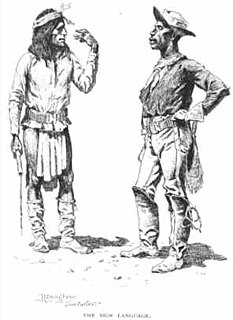 W
WThe Cherry Creek campaign occurred in March 1890 and was one of the final conflicts between hostile Apaches and the United States Army. It began after a small group of Apaches killed a freight wagon operator, near the San Carlos Reservation, and was part of the larger Apache campaign, beginning in 1889, to round up Apaches who had left the reservations. The American army fought a skirmish with the Apaches near Globe, Arizona, at the mouth of Cherry Creek, which resulted in the deaths of two hostiles and the capture of the remaining three. Two men received the Medal of Honor for their service during the campaign.
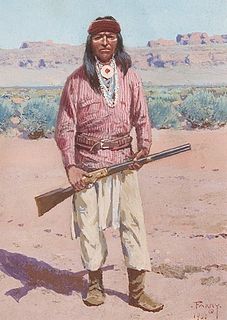 W
WThe Battle of Cibecue Creek was an engagement of the Apache Wars, fought in August 1881 between the United States and White Mountain Apaches in Arizona, at Cibecue Creek on the Fort Apache Indian Reservation. After an army expedition of scouts, U.S. Army soldiers 'arrested' a prominent Cibecue Apache medicine man named Nock-ay-det-klinne. The U.S. Army soldiers were taking Nock-ay-det-klinne back to the fort when they were ambushed by Apache warriors. During the conflict, the U.S. Army soldiers killed Nock-ay-det-klinne. Most of the 23 Apache scouts mutinied, in the largest such action of its kind in U.S. history. The soldiers retreated to Fort Apache. The following day, the White Mountain Apache mounted a counter-attack. The events sparked general unrest and led to White Mountain Apache warriors leaving the Fort Apache Indian Reservation to join forces with the Apache leader of the Bedonkohe band of Chiricahua Apache named Goyahkla, better known as Geronimo.
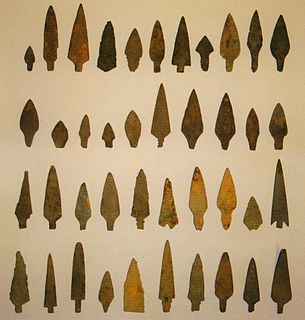 W
WThe Battle of Cieneguilla was an engagement of the Jicarilla War involving a group of Jicarilla Apaches, possibly their Ute allies, and the American 1st Cavalry Regiment on March 30, 1854 near what is now Pilar, New Mexico. The Santa Fe Weekly Gazette reported that the action "was one of the severest battles that ever took place between American troops and Red Indians." It was one of the first significant battles between American and Apache forces and was also part of the Ute Wars, in which Ute warriors attempted to resist Westward expansion in the Four Corners region.
 W
WThe Crawford affair was a battle fought between Mexico and the United States in January 1886 during the Geronimo Campaign. Captain Emmet Crawford was commanding a company of Apache scouts, sixty miles southeast of Nacori Chico in Sonora, when his camp was attacked by Mexican Army militiamen. In the action, Crawford was shot and later died; his death nearly started a war between the United States and Mexico.
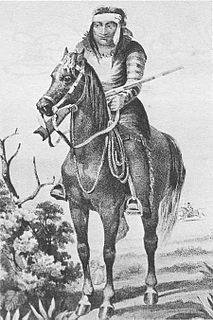 W
WThe Battle of the Diablo Mountains was an October 1854 engagement between the U.S. Army and the Lipan Apache. A small force of Mounted Rifles attacked a much larger force of Lipan Apaches at the base of the Diablo Mountains in Texas.
 W
WThe First Battle of Dragoon Springs was a minor skirmish between a small troop of Confederate dragoons of Governor John R. Baylor's Arizona Rangers, and a band of Apache warriors during the American Civil War. It was fought on May 5, 1862, near the present-day town of Benson, Arizona, in Confederate Arizona.
 W
WThe Second Battle of Dragoon Springs was one of two skirmishes involving Apache warriors and Confederate soldiers in Arizona. It was fought during the American Civil War on May 9, 1862 and was a response to the First Battle of Dragoon Springs in which Confederate forces were defeated. Four men were killed in the first skirmish and several heads of livestock were captured. The rebel commander Captain Sherod Hunter, ordered his foraging squad to take back the livestock from Cochise's warriors, during which five Apaches were killed. There were no Confederate casualties.
 W
WThe Battle of Fort Apache was an engagement of the Apache Wars between the cavalry garrison of Fort Apache and dozens of mounted White Mountain Apache warriors. The battle occurred in eastern Arizona Territory on September 1, 1881.
 W
WThe Battle of Fort Buchanan was an Apache attack on the United States Army post of Old Fort Buchanan in southern Arizona, which occurred on February 17, 1865. Though a skirmish, it ended with a significant Apache victory when they forced the small garrison of California Volunteers to retreat to the Santa Rita Mountains. Fort Buchanan was the only American military post conquered during the war against the Chiricahua.
 W
WThe Battle of Fort Tularosa occurred in May 1880 near the present-day town of Aragon in Catron County, New Mexico. In an ongoing campaign to keep from being forced to live on reservations, Chiricahua Apache warriors led by Victorio attacked Fort Tularosa north of San Francisco Plaza. Buffalo Soldiers from the United States Army's 9th Cavalry, led by Sergeant George Jordan, repulsed the attack.
 W
WThe Gallinas massacre or the Gallinas Mountains massacre was an engagement of the Apache Wars on September 2, 1861, between a war party of Mescalero Apache warriors and four Confederate soldiers in the Gallinas Mountains of what is now Lincoln County, New Mexico. The incident occurred early in the American Civil War, at a time when the area was claimed by the Confederate States of America as part of Confederate Arizona and military control of the territory had not yet been decisively established by either Union or Confederate forces.
 W
WThe Battle of Hembrillo Basin was fought April 5-8, 1880 between the United States Army against a combined band of Chiricahua and Mescalero Apaches led by Chief Victorio. Hembrillo Basin was the largest battle of Victorio's War, although casualties were light on both sides. Victorio held off an attack by superior numbers of army soldiers and Indian scouts, evacuated his women and children from the battlefield, and withdrew successfully. Hembrillo Basin is located on the White Sands Missile Range and access by the public is strictly regulated.
 W
WThe Jicarilla War began in 1849 and was fought between the Jicarilla Apaches and the United States Army in the New Mexico Territory. Ute warriors also played a significant role in the conflict as they were allied with the Jicarillas. The war started when the Apaches and Utes began raiding against settlers on the Santa Fe Trail. Eventually, in 1853, the American army retaliated which resulted in a series of battles and campaigns that ended in 1854 when a large military expedition managed to quell most of the violence. However, some minor skirmishing continued into 1855.
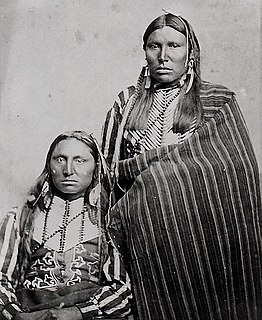 W
WThe Battle of Little Robe Creek, also called the Battle of Antelope Hills, took place on May 12, 1858. It actually was a series of three distinct encounters that took place on a single day, between the Comanches, with Texas Rangers, militia, and allied Tonkawas attacking them. It was undertaken against the laws of the United States at the time, which strictly forbade such an incursion into the Indian Territories of Oklahoma, and marked a significant escalation of the Indian Wars. It also marked the first time American or Texas Ranger forces had penetrated the Comancheria as far as the Wichita Mountains, and Canadian River, and it marked a decisive defeat for the Comanches.
 W
WThe Battle of Little Dry Creek was a skirmish during Geronimo's War. Chiricahua Apache warriors were raiding in the Arizona and New Mexico border area when they ambushed a larger force of United States Army troops and Navajo Scouts near Pleasanton.
 W
WMcMillenville, also known as McMillianville or McMillanville, is a populated place in Gila County, Arizona. Silver ore was discovered by chance in 1876 by Theodore H. Harris and Charles McMillen, and the town formed around the ore deposits.
 W
WThe Battle of the Mimbres River was a surprise attack launched by a troop of American militia against an encampment of Chiricahua Apaches along the western shore of the Mimbres River.
 W
WThe Battle of Mount Gray was a little-known engagement of the Apache Wars fought at the foothills of Gray Mountain, then known as Mount Gray on April 7, 1864. A troop of the United States Army's California Column attacked a superior force of Chiricahua Apaches at their camp and routed them from the field.
 W
WThe Mowry massacres, also known as the Mowry murders, were a series of Apache attacks in and around the mining town of Mowry, Arizona between 1863 and 1865. At least sixteen American settlers were killed during the period.
 W
WThe Battle of Pecos River was fought in 1864 during the Navajo Wars. United States Army troops and Apache Scouts defeated a force of Navajo warriors next to the Pecos River in New Mexico. It is notable for being one of the many Indian war battles involving the California Column.
 W
WThe Battle of Pima Butte, or the Battle of Maricopa Wells, was fought on September 1, 1857 at Pima Butte, Arizona near Maricopa Wells in the Sierra Estrella. Yuma, Mohave, Apache and Yavapai warriors attacked a Maricopa village named Secate in one of the largest battles in Arizona's history. It was also the last major battle fought by the Yumas and the last major battle fought solely between Native Americans in North America.
 W
WThe Battle of the Pinal Mountains was one of many small battles to occur between Apache warriors and Spanish colonists. The exact date of the battle is unknown but happened on one day in mid June, 1788, in the Pinal Mountains of east central Arizona.
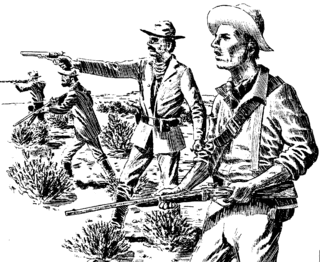 W
WThe Battle of Placito or Battle of the Placito was an engagement between ethnic Mexican settlers, Confederate soldiers and Apache warriors. It took place at the now abandoned village of Placitas in Confederate Arizona. The action is a part of the Apache Wars of the mid to late nineteenth century.
 W
WThe Battle of Salt River Canyon, the Battle of Skeleton Cave, or the Skeleton Cave Massacre was the first principal engagement during the 1872 Tonto Basin Campaign under the command of Lieutenant Colonel George Crook. It was part of the Yavapai War from 1871 to 1875.
 W
WThe Battle of Sunset Pass was fought in November 1874 during the Yavapai War. Following the theft of livestock by a band of Tonto Apaches, a troop of United States Army soldiers was dispatched to track the natives and recover the stolen property. The Americans found the raiders at Sunset Pass, in Coconino County, Arizona, where a small skirmish ensued.
 W
WThe First Battle of Terrenate on July 7, 1776 was a military engagement during the Spanish period of Arizona. It was fought between Spanish soldiers and Apache warriors, near the Presidio Santa Cruz de Terrenate in the present day southern Arizona.
 W
WThe Siege of Tubac was a siege of the Apache Wars, between settlers and militia of Confederate Arizona and Chiricahua Apaches. The battle took place at Tubac in the present day southern Arizona. The actual dates of this engagement have been lost to time.
 W
WThe First Battle of Tucson was a confrontation at Tucson, Arizona on December 6, 1779, as part of the Apache-Mexico Wars. Captain Pedro Allande y Saabedra with a force of only fifteen men defeated an army of around 350 strong.
 W
WThe Fourth Battle of Tucson was a raid during the lengthy wars between Spanish colonists in Arizona and its region and Apache Indians. At break of day, on March 21, 1784, a force of no more than 500 Apaches and Navajos attacked Spanish cavalry guards protecting a herd of livestock at the Presidio San Augustin del Tucson in southern Arizona.
 W
WThe Third Battle of Tucson was a battle during the Spanish colonization of Sonora, now the present day Arizona in the United States. The battle pitched the Apache warriors against the Spanish cavalry garrison of Tucson.
 W
WThe Second Battle of Tucson or the May Day Attack was a battle in Tucson, Arizona, and the neighboring pueblo. It occurred during the Mexican Apache Wars on May 1, 1782, between a small garrison of Spanish soldiers and hundreds of Apache warriors.
 W
WThe Battle of Turret Peak occurred March 27, 1873 in the Arizona Territory between the United States Army and a group of Yavapai and Tonto Apaches as part of Lieutenant Colonel George Crook's campaign to return the natives to reservations.
 W
WThe White massacre was an engagement between American settlers and a band of Utes and Jicarilla Apaches that occurred in northeastern New Mexico on October 28, 1849. It became notable for the Indians' kidnapping of Mrs. Ann White, who was subsequently killed during an Army rescue attempt a few weeks later.
 W
WThe Battle of Yellow House Canyon was a battle between a force of Comanches and Apaches against a group of American bison hunters that occurred on March 18, 1877, near the site of the present-day city of Lubbock, Texas. It was the final battle of the Buffalo Hunters' War, and was the last major fight involving the United States and Native Americans on the High Plains of Texas.